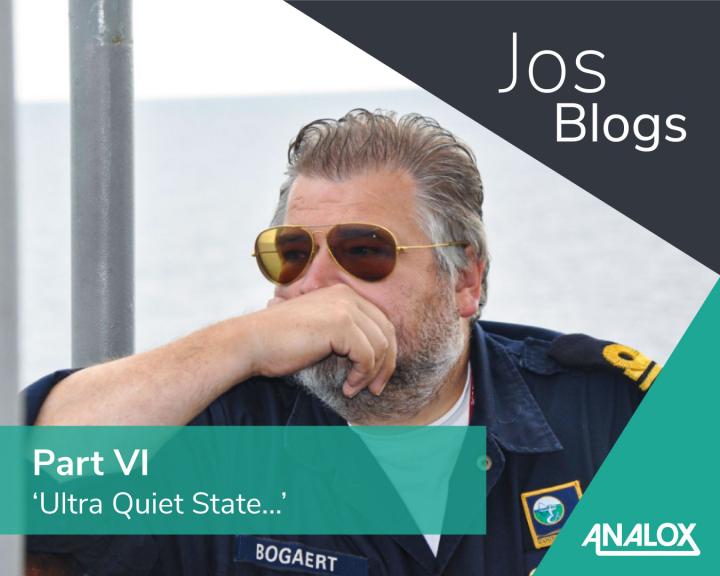PART VII
AN UNDERWATER LOOK.
When HMS Tuna was behind the CBG the captain raised his periscope and took some pictures from the CBG. With his radio mast raised they tried to intercept radio messages from the CBG and try to find out what their intentions were. The Captain ordered the radio room to send a flash message to HQ reporting that he had found the CBG and to give position and speed.
HQ ordered him to keep following the CBG at a safe distance and gather as much information as he could.
Slowly the Captain reduces the distance from him and the CBG and orders the boat back to patrol state. Aircon has been switched on, ventilation is on high again and the CO2 scrubber has started. The Analox CAMS system reported that the CO2 level had risen to 0.8% and O2 levels were down to 19.5 % Standard procedure is to keep CO2 levels at around 0.6 % and O2 levels above 20% . To boost the oxygen level an oxygen candle has been ignited. Through a chemical process, about 3000 litres of pure oxygen will be released, helping to boost the O2 level almost back to 21%.
The duty watches onboard have changed and the cook has started to prepare dinner. As night begins to fall the boat has switched to Red Light. This is done to protect the night vision of the Captain and duty officer, should they have to look through the periscope at night. The CBG has kept sailing at the same speed and on the same course. Now and then they make a sweep to listen for submarines which could be following them but the HMS Tuna has not been detected.
At midnight the captain decides to sail away from the CBG to a safe distance so he can charge the batteries , carry out domestic routines and also refresh the air in the boat. Unlike nuclear, diesel submarines cannot generate oxygen from sea water so they rely on the snorting system to refresh the air.
At dawn HMS Tuna crawls back to the CBG and takes up their station some 3 miles behind the carrier. During the night fresh orders were received from HQ. As the aircraft carrier was brand new not much data from the carriers were known. Orders were to make sonar recordings from the propeller and also make preparations for an ‘underwater look’ from the carrier.
An underwater look requires great skill from the whole crew. They have to sail under the carrier with the periscope raised to film the bottom of the carrier. Any sudden rise in the depth of the submarine could not only damage the carrier but also the periscope and breach the watertight integrity of the submarine.
The Captain orders a briefing in the ward room with all branch heads and the COB. He wants to make a plan on how to execute the underwater look with his crew members in position, executing the underwater look in the early afternoon.
If you missed part VI, check it out below:
